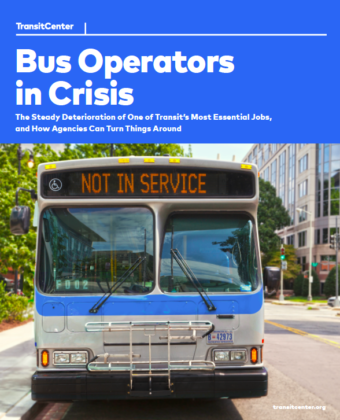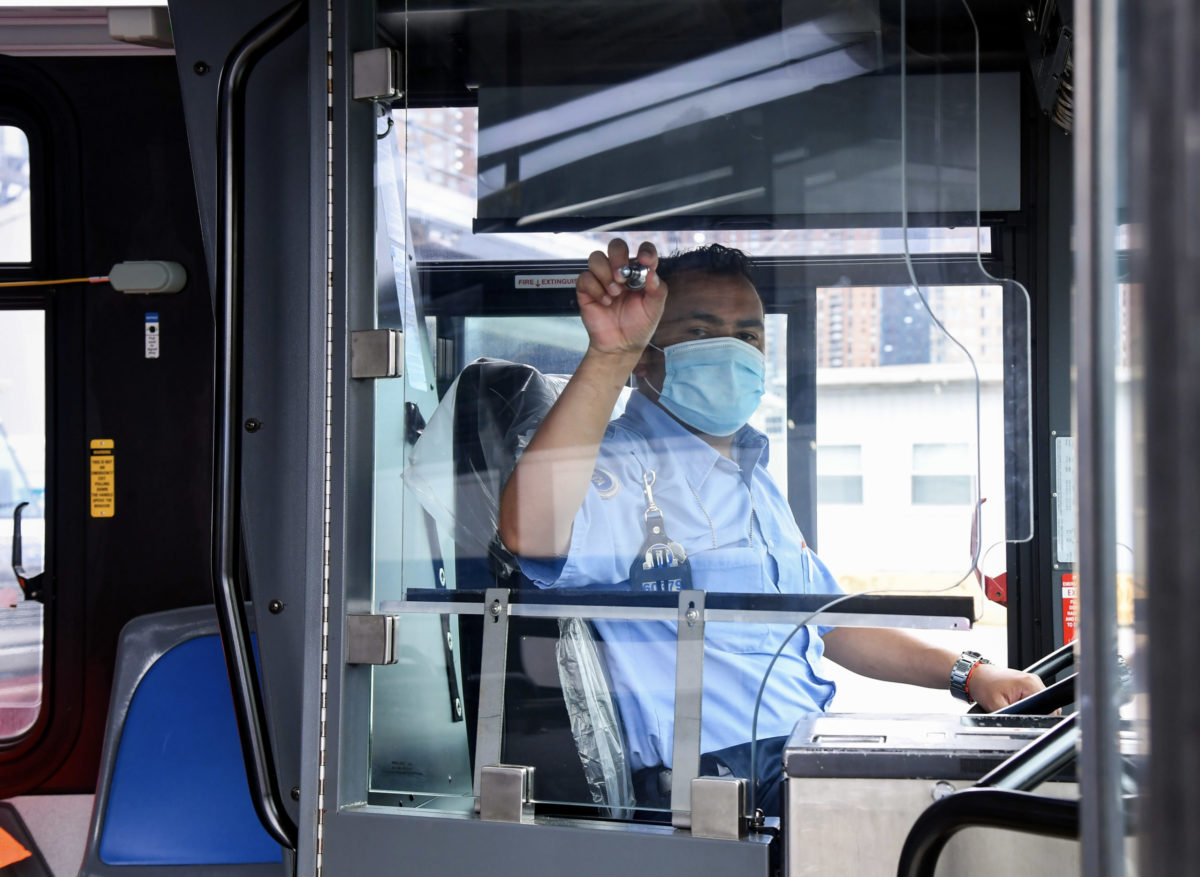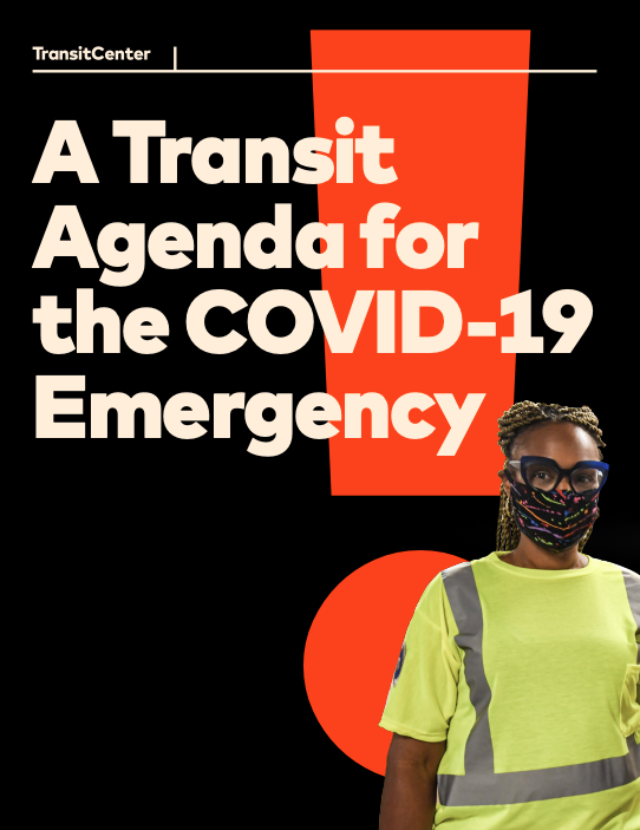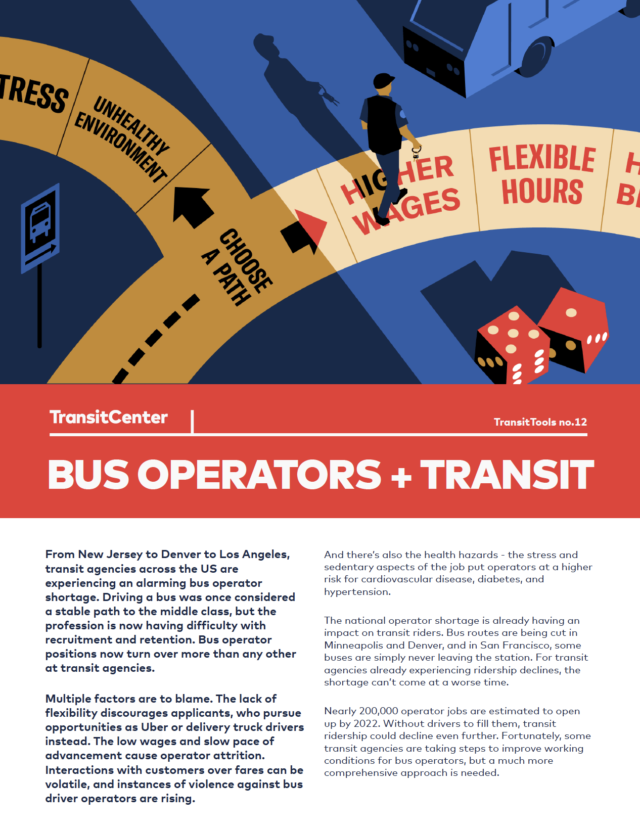Press:
Mass Transit Magazine: “TransitCenter Report Examines the Transit Crisis”
Bloomberg: “America’s Bus Driver Shortage Has Left Transit Systems in Crisis”
Route Fifty: “Bus Driver Shortage Undercutting Local Transit Systems Nationwide”
Streetsblog USA: “Four Factors Driving the Bus Operator Shortage (And What to Do About Them)”
Scripps National News: “Bus Operator Shortage Solutions”
Texas Border Business: “Partnership Enables Training for City Buses”
NPR Miami: “Bus operators are in high demand to fill openings with Miami-Dade County”
Smart Cities Dive: “Transit agencies can’t hire enough drivers to keep the buses running”
Stateline: “Fewer City Bus Drivers Means Longer Wait Times, Limited Service”
Virginia Mercury: “Can Virginia transit providers innovate their way out of an operator shortage?”
Government Technology Magazine: “Post-Pandemic Transit Recovery Hobbled by Worker Shortages”
Summary:
Across the country, a bus operator shortfall is throwing agencies into crisis.
In Miami, a promising bus network redesign that would have dramatically increased transit access to jobs has been postponed because of a lack of operators. In Los Angeles, a shortfall of at least 600 operators at LA Metro is undercutting the recent bus network redesign’s ability to improve transit access in Black and brown neighborhoods.
The crisis has spared few agencies. In a February 2022 APTA (American Public Transportation Association) survey of 117 transit agencies of all sizes, 71% reported that they have either had to cut service or delay service increases because of worker shortfalls. More than nine in ten public transit agencies stated that they are having difficulty hiring new employees, and that bus operations positions are the most difficult to fill.
An increased rate of retirement coupled with struggles to recruit and retain new operators have played a key role in creating operator shortfalls. Even in the absence of a pandemic, transit agencies would be challenged by a lack of workers.
A key cause of operator shortfalls is the position’s lack of attractiveness. While many agencies still offer a middle-class salary and good benefits for the position, the compensation does not support workers at the levels that it once did, particularly as housing and living costs in cities skyrocket.
At the same time, the job has become in many ways more difficult. Operator assaults have increased, rigid scheduling requirements make it difficult for junior operators and workers with child or eldercare responsibilities, and a lack of access to adequate facilities—both restrooms on route and break rooms at depots—exacts a health toll on operators. Hiring processes are slow, as are opportunities for raises and advancement within agencies. As a result, many potential workers have decided to look elsewhere for employment, such as driving for transportation network companies, trucking, or for delivery companies.
To tackle operator shortfalls, job quality needs to be taken seriously by transit agencies and the transit industry. Operators are the backbone of the transit industry—they deserve better compensation, paths for advancement, and the opportunity to influence their working conditions. Agencies must also speed up hiring processes, introduce more flexibility into the job, improve operator facilities and amenities, and implement additional health and safety measures—both to attract new entrants and retain existing employees.
The shortfall would also benefit from a response at the federal level. The White House and USDOT (United States Department of Transportation) have done an exceptional job highlighting and developing solutions for the truck driver shortage. The transit worker shortfall should be getting the same level of attention. The millions of dollars from the IIJA (Infrastructure Investment and Jobs Act) currently flowing toward capital investments in new buses will be of little use if there aren’t enough operators to drive them.
Read the full report.



